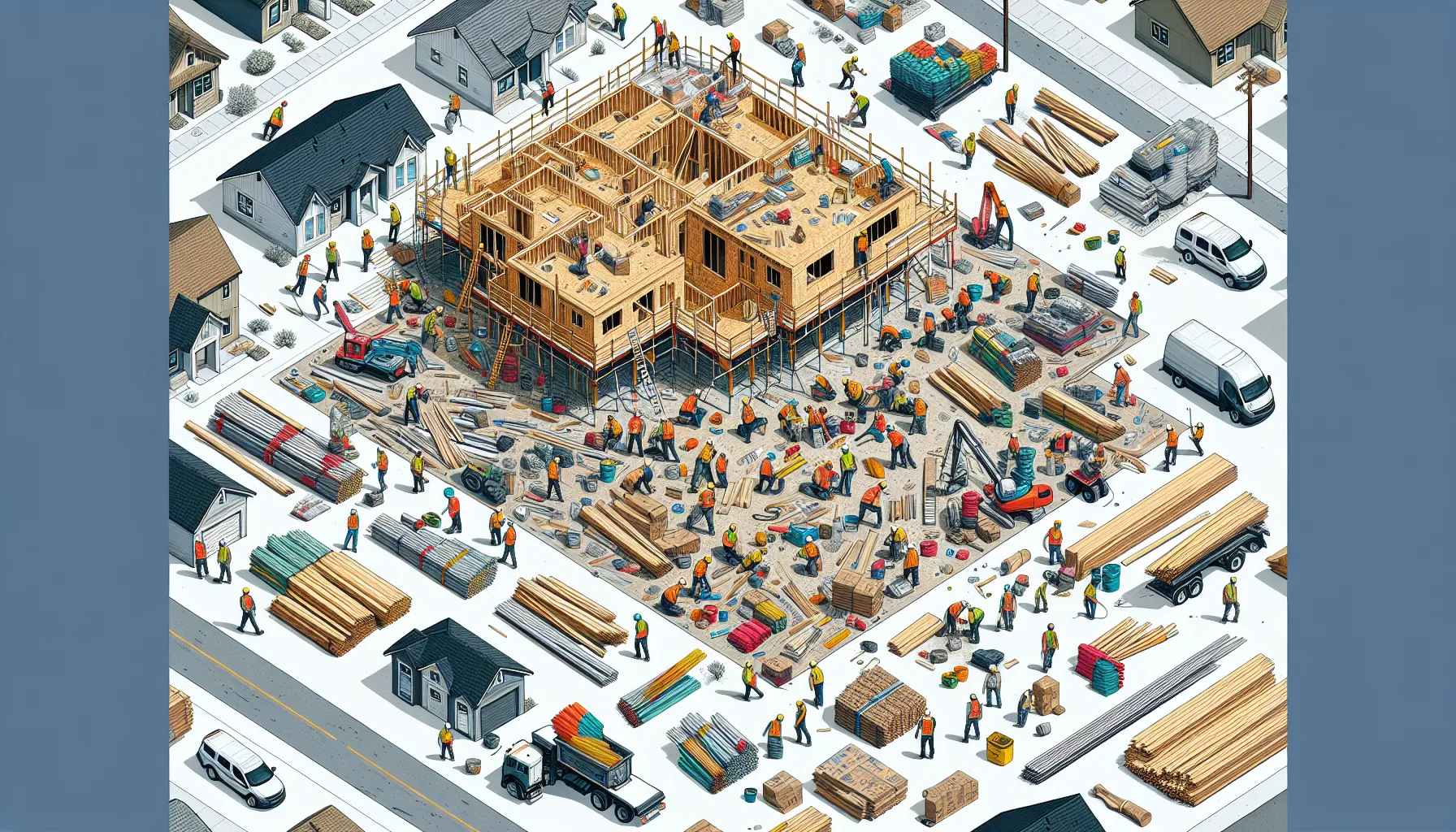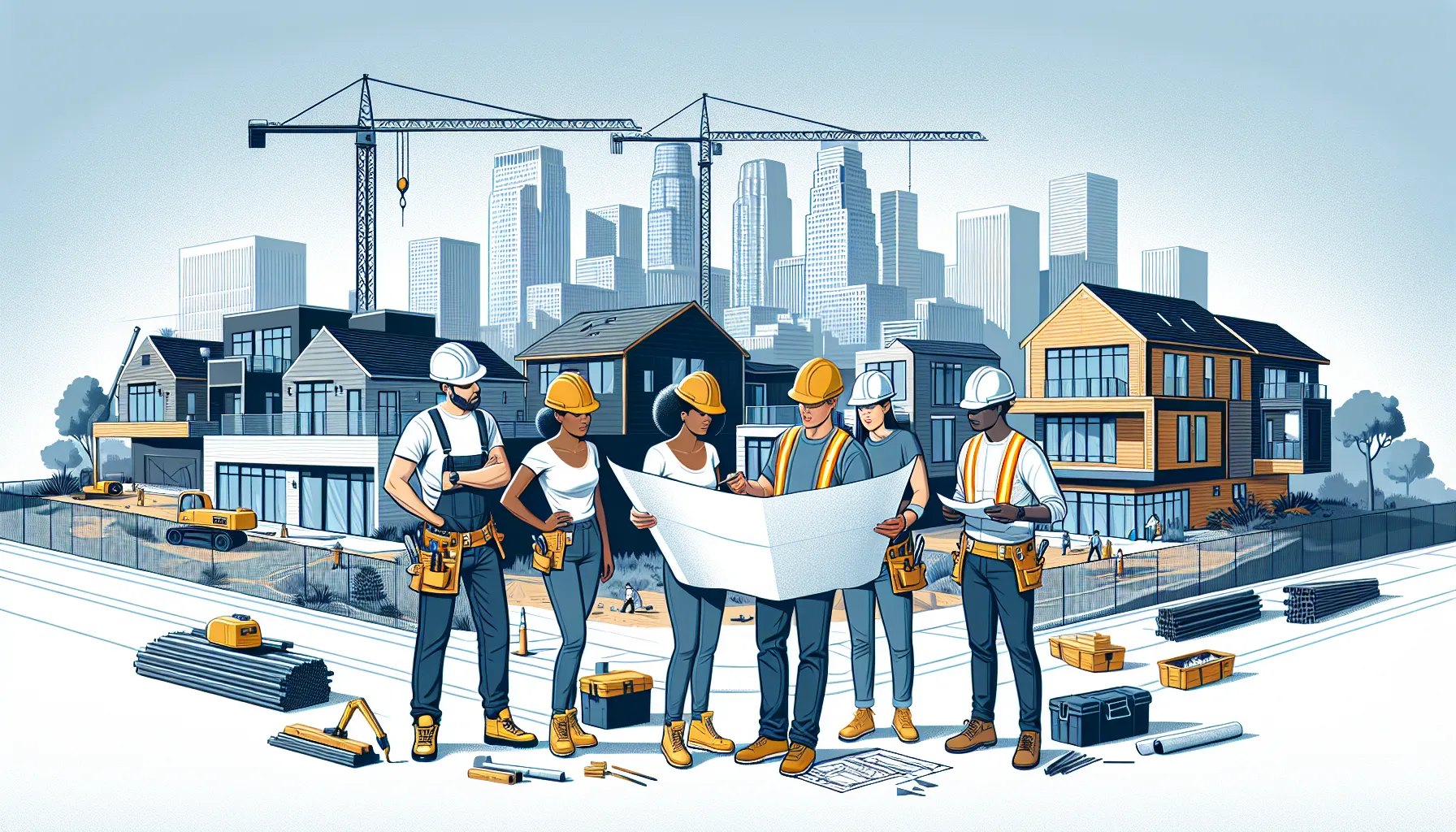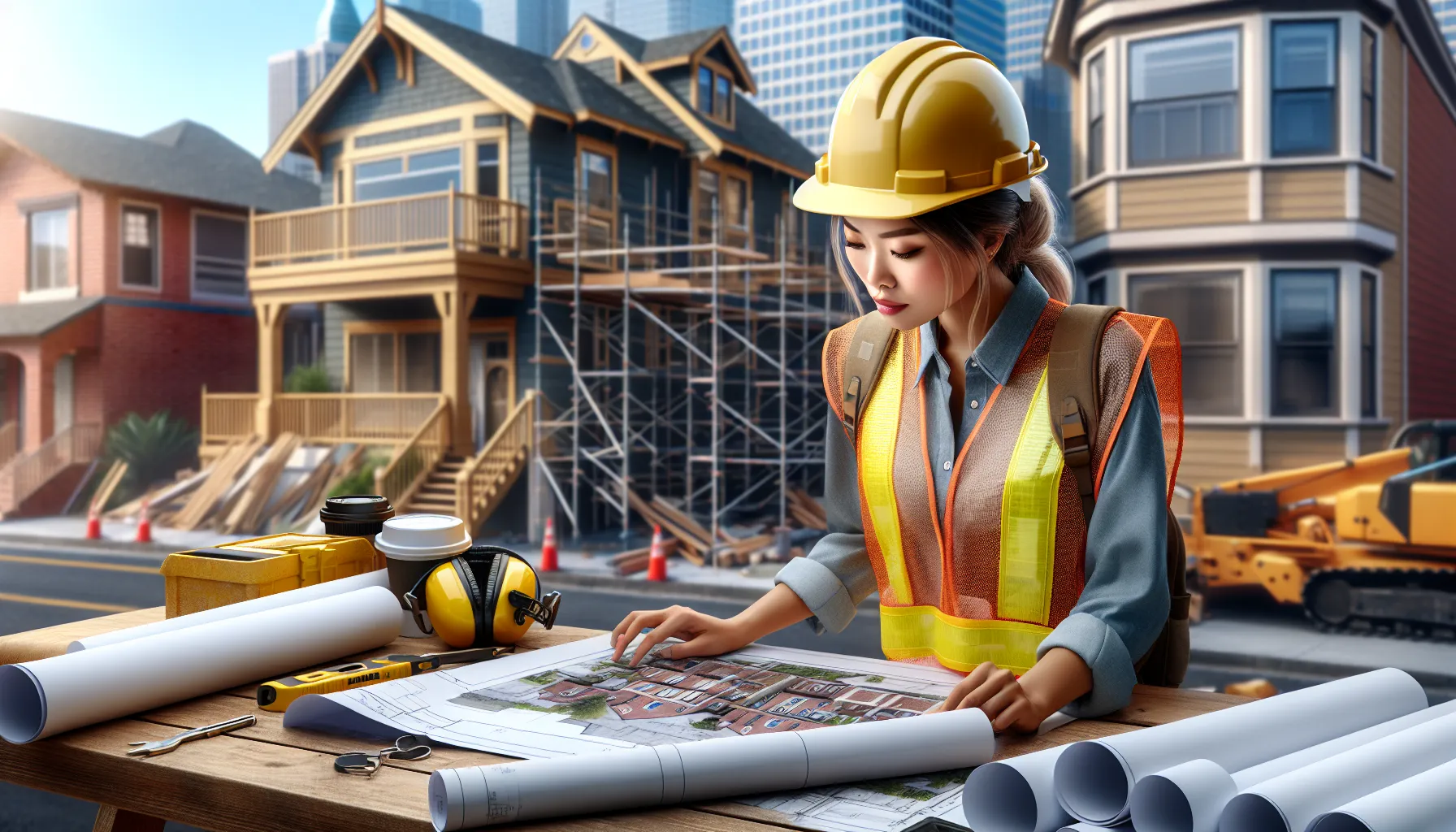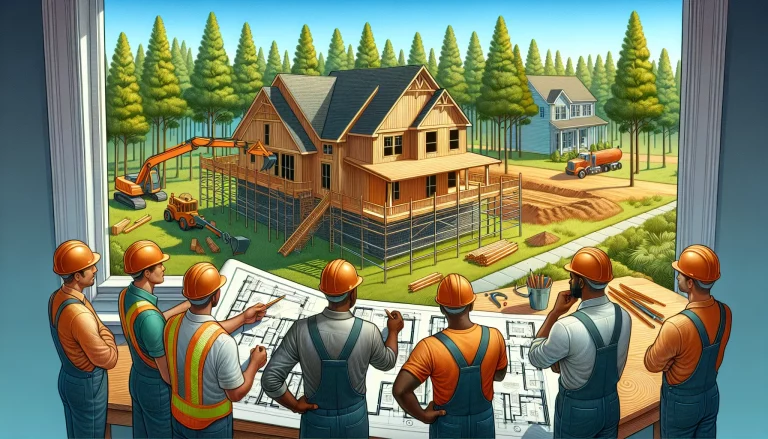Key Takeaways
- Understanding Costs: The average construction costs in California for 2024 range between $300 and $500 per square foot, influenced by factors such as location, material prices, and labor rates.
- Land Acquisition: Land prices vary dramatically, from approximately $100,000 in rural areas to over $3 million in metropolitan regions, affecting the overall budget significantly.
- Permitting and Inspection Fees: Budget for permits and inspection costs, which can range from $5,000 to $25,000, depending on local regulations and project scale.
- Labor Expenses: Skilled labor costs are a major consideration, ranging from $50 to $100 per hour, driven by current market demand and labor shortages.
- Regional Variations: Building costs differ across California, with Northern and Southern regions presenting unique pricing structures based on market dynamics and demand.
- Financing Options: Explore various financing options such as traditional mortgages and construction loans, each suited for specific financial needs and project types.
Building a house in California is an exciting venture, but it’s crucial to understand the costs involved. As we dive into 2024, the landscape of home construction is evolving, influenced by factors like inflation, labor shortages, and material prices. Whether we’re dreaming of a cozy cottage or a sprawling estate, knowing what to expect financially can make all the difference.
Have you ever wondered how much it really costs to turn that dream into reality? From land acquisition to permits and labor, every detail adds up. In this article, we’ll break down the expenses you’re likely to encounter and provide insights to help us navigate this complex process. By the end, we’ll be equipped with the knowledge to make informed decisions and budget effectively for our California dream home.
Overview of The Cost to Build a House in California (2024)
Understanding the cost to build a house in California in 2024 involves several key components. We recognize that costs can range significantly depending on location, design choices, and market conditions. As of early 2024, average construction costs per square foot sit between $300 and $500, influenced by escalating material prices and labor wages. Urban areas like Los Angeles or San Francisco see higher expenses due to demand and zoning regulations, which can drive costs toward the upper end of that range.
We must consider land acquisition costs, which vary widely across the state. In metropolitan regions, buyers might pay anywhere from $1 million to over $3 million for a suitable lot, while rural areas present more affordable options, sometimes around $100,000 to $500,000. Beyond the purchase price, we face additional expenditures for soil testing, surveys, and site preparation, which collectively can add tens of thousands to our overall budget.
Permitting and inspection costs also play a critical role. We encounter fees that can range from $5,000 to $25,000, depending on the local regulations and the project’s scale. Obtaining the necessary permits is essential, as delays in approval can push construction timelines and expenses higher. We advocate for thorough preparation to prevent unexpected costs during the building process.
Labor costs represent another significant portion of our budget. As of 2024, skilled labor rates sit between $50 and $100 per hour, highlighting the impact of current labor shortages. We advise planning for contingencies to accommodate fluctuations in labor availability and costs.
The cost to build a house in California in 2024 results from a complex interplay of land, materials, labor, and regulatory factors. We encourage a detailed evaluation of these aspects to create an accurate financial model for your construction project.
Key Factors Influencing Costs

Several key factors shape the development costs of building a house in California. Understanding these elements helps in planning and budgeting effectively for construction projects.
Land Prices
Land prices vary widely across California, significantly impacting overall construction costs. In urban areas like Los Angeles and San Francisco, properties often sell for between $1 million and over $3 million due to high demand and limited availability. Conversely, rural locations can offer land options ranging from $100,000 to $500,000. Factors contributing to these price differences include proximity to amenities, school quality, and local market trends. Given the scarcity of affordable lots, analyzing neighborhood potential and future growth can inform better land investment decisions.
Construction Materials
Construction material costs play a crucial role in determining total building expenses. Prices tend to fluctuate based on market demand and availability. In California, average material expenses can start around $100 per square foot and can increase for premium materials. Factors such as transportation costs, sourcing local materials versus imported ones, and ongoing supply chain issues also influence pricing. Prioritizing materials that balance quality and budget can lead to significant savings without compromising on durability or aesthetics.
Labor Costs
Labor costs represent a significant portion of construction expenses. As of early 2024, wages for skilled labor in California range from $50 to $100 per hour, reflecting current labor shortages and high demand for skilled trades. Factors influencing these rates include project type, geographic location, and overall economic conditions. Engaging with experienced contractors and understanding their fee structures can help us establish realistic budgets and timelines. Planning for potential delays or additional labor complexities will further assist in navigating this challenging landscape.
Average Building Costs by Region

Building costs across California vary significantly based on geography. Understanding these regional differences helps us refine our budgeting for construction projects.
Northern California
In Northern California, building costs often reflect the high demand in urban areas like San Francisco and surrounding cities. Average construction expenses range from $350 to $500 per square foot, with projects in urban centers costing more due to zoning regulations and land scarcity. Land prices frequently exceed $1 million for small lots, while rural areas may offer land closer to $100,000. Additional costs, such as permits and inspections, typically range from $10,000 to $20,000, depending on the project size. Labor costs also add up, sitting between $60 and $90 per hour, reflecting the competitive market for skilled workers. Navigating these factors requires careful planning and consideration of local market dynamics.
Southern California
Southern California presents its own set of challenges regarding building costs. Here, prices range from $300 to $450 per square foot, influenced by the demand in cities like Los Angeles and San Diego. Land acquisition in metropolitan areas often starts at $500,000, while more suburban or rural locations provide options from $100,000 to $300,000. Costs for permits and inspections can vary widely, typically falling between $5,000 and $15,000. Labor costs, which remain a vital budget consideration, range from $50 to $80 per hour, influenced by ongoing shortages. Detailed assessments of these regional aspects reveal critical insights for effective project planning.
Cost Breakdown
Understanding the various costs associated with building a house in California is crucial for effective budgeting. This section outlines key expenses, including permits and fees, as well as design and architectural costs, relevant as we move into 2024.
Permits and Fees
Permits and fees represent critical components of our overall construction budget. These costs can range from $5,000 to $25,000, depending on location and the scale of the project. Obtaining the necessary permits ensures compliance with local building codes and regulations. Each municipality may have different requirements that can affect the timeline and budget. For instance, urban areas may charge higher fees due to greater complexities in zoning and inspections. Delays in securing permits can lead to increased costs, making early planning essential.
Design and Architectural Costs
Design and architectural costs are pivotal in shaping our project’s vision and functionality. On average, architectural fees can range between 5% and 15% of the total construction cost. This percentage includes services such as creating blueprints, site analysis, and project management. Engaging a skilled architect helps us navigate local regulations while maximizing design efficiency. Custom designs typically incur higher costs, but they often enhance property value. Therefore, investing in quality design services yields long-term benefits, aligning with our objectives and budget.
Financing Options for Home Build
Exploring financing options for building a home in California presents various pathways tailored to unique financial situations. Understanding these options empowers us to make informed choices that align with our goals.
Traditional Mortgages
Traditional mortgages provide a familiar and accessible means to finance a new home. Typically, they encompass fixed-rate or adjustable-rate loans that facilitate the purchase of both existing and newly constructed homes. While these mortgages usually require a down payment ranging from 3% to 20% of the purchase price, securing a larger down payment often results in better mortgage terms. With conventional lenders, we can also benefit from lower interest rates based on our credit scores and financial history. We should consider additional costs associated with traditional mortgages, such as private mortgage insurance (PMI) for down payments under 20%. This option offers a straightforward structure, but it’s crucial to explore whether the total cost aligns with our financial capabilities and long-term plans.
Construction Loans
Construction loans specifically target the costs associated with building a home. These short-term loans typically cover the construction period, often lasting between 6 to 18 months, depending on the project timeline. Borrowers usually draw funds in stages, aligning with specific construction milestones—this approach helps manage cash flow effectively. Construction loan amounts depend on the estimated cost to build, plus the land value, sometimes reaching as high as 80% of the combined value. Once the construction phase concludes, we often convert the loan into a traditional mortgage, easing the transition into long-term financing. It’s essential to note that construction loans typically require a detailed project plan and contractor bids, making thorough preparation critical to a successful application.
Conclusion
Building a house in California in 2024 requires careful financial planning and an understanding of the various factors that can impact costs. By being aware of expenses from land acquisition to permits and labor, we can better prepare for the journey ahead.
As we navigate the complexities of construction costs, it’s crucial to stay informed about market trends and fluctuations. With the right preparation and a solid budget, we can turn our dream home into a reality while managing the financial aspects effectively.
Whether we choose urban or rural locations, understanding the nuances of each market will help us make the best decisions for our future. Let’s embark on this exciting venture with confidence and clarity.
Frequently Asked Questions
What are the average construction costs per square foot in California for 2024?
The average construction costs in California for 2024 range from $300 to $500 per square foot. Urban areas like Los Angeles and San Francisco often see higher costs due to demand and zoning regulations.
How much does land acquisition cost in California?
Land acquisition costs vary widely, with metropolitan lots ranging from $1 million to over $3 million. In contrast, rural areas can offer land options priced between $100,000 and $500,000.
What are the costs associated with permits and inspections?
Permitting and inspection costs in California typically range from $5,000 to $25,000. The exact amount depends on local regulations and the scale of the construction project.
What should I expect for labor costs in home construction?
Labor costs for construction in California are influenced by current shortages and generally range from $50 to $100 per hour, representing a significant portion of the overall budget.
How do material costs affect the total budget for building a home?
Material costs can fluctuate based on market demand and availability, starting around $100 per square foot. These costs significantly impact the total budget and should be considered in planning.
How are design and architectural costs calculated?
Design and architectural costs generally average between 5% and 15% of the total construction cost. Investing in skilled architects can enhance project efficiency and increase property value.
What financing options are available for building a home in California?
Common financing options include traditional mortgages and construction loans. Traditional mortgages typically require a down payment, while construction loans are short-term and convert into traditional mortgages once the project is completed.
Why is thorough preparation important before construction?
Thorough preparation helps accommodate fluctuations in costs and timelines. It’s essential to plan for contingencies, ensuring the project stays on budget and schedule despite potential challenges.






